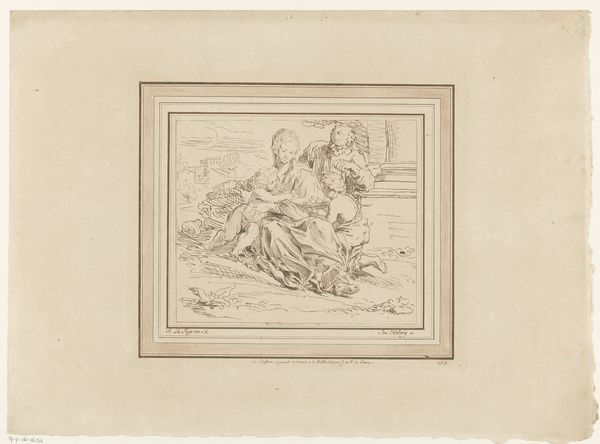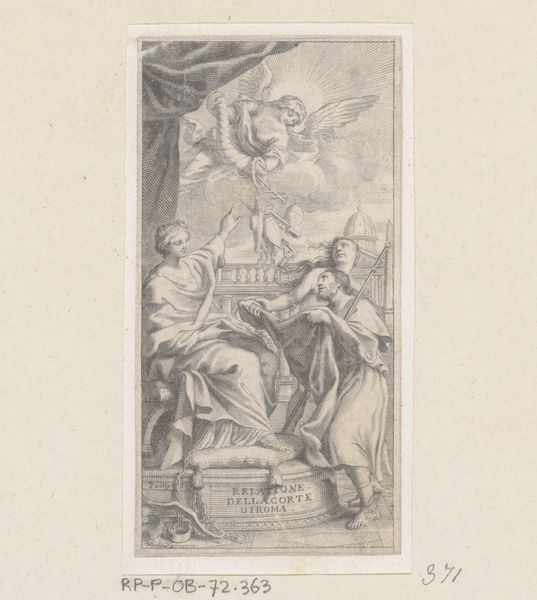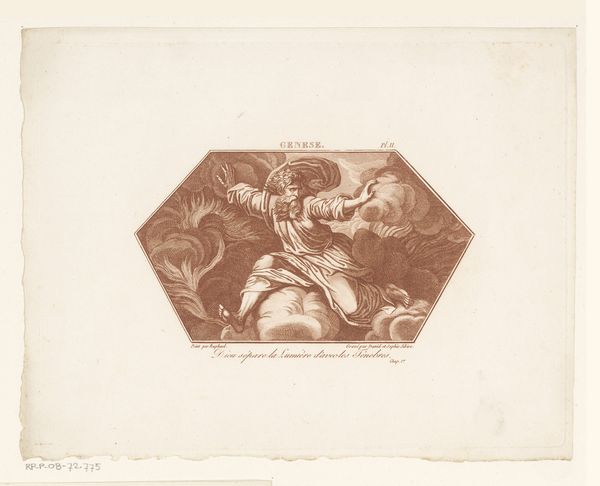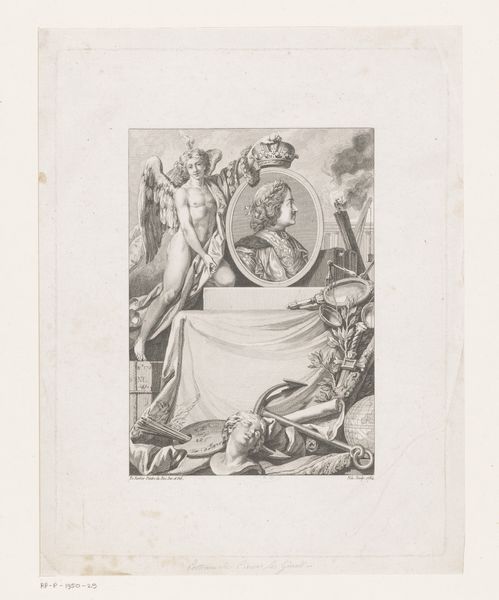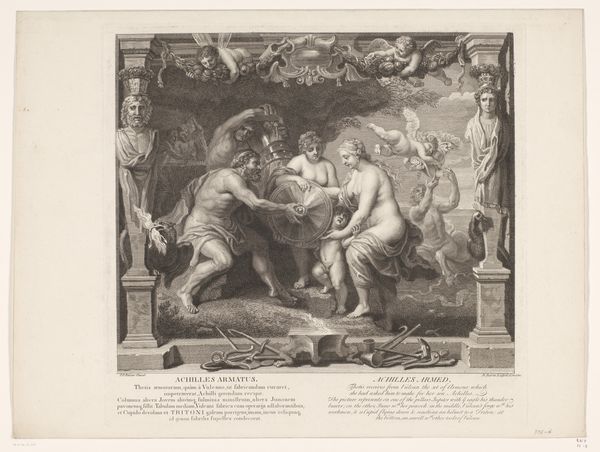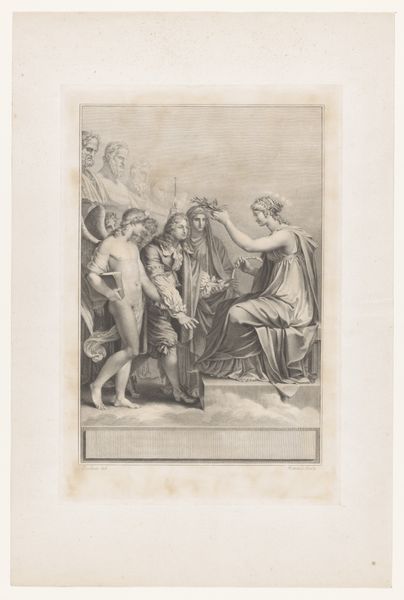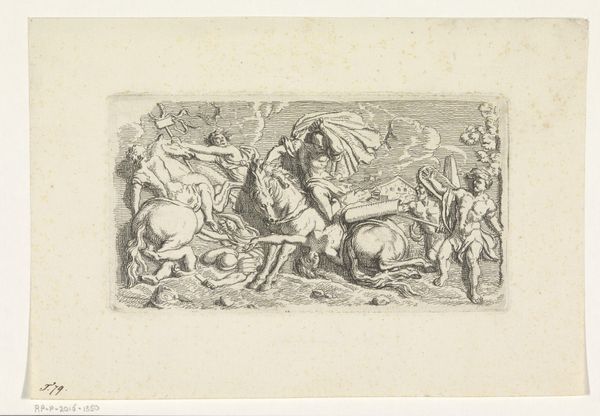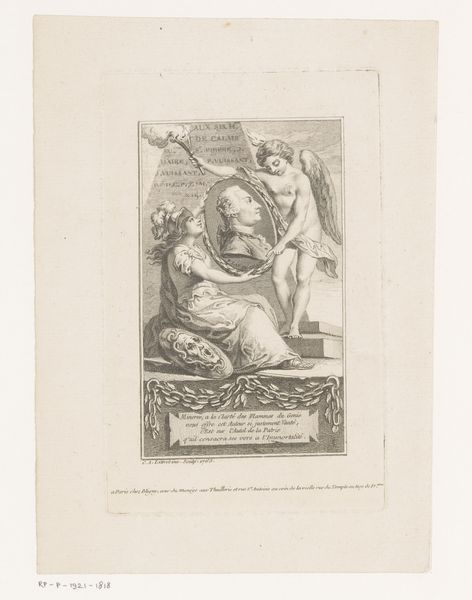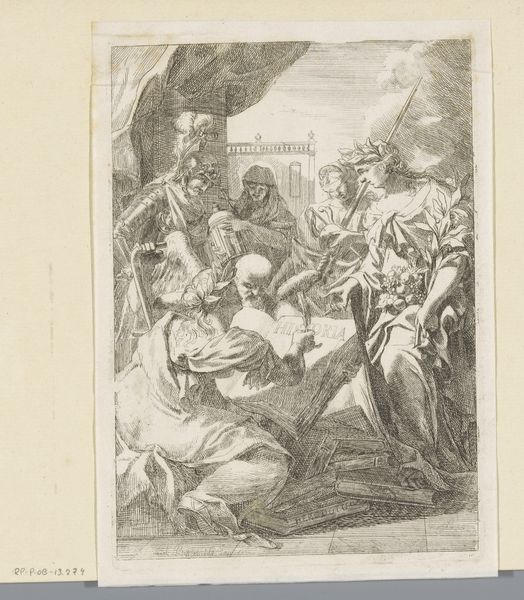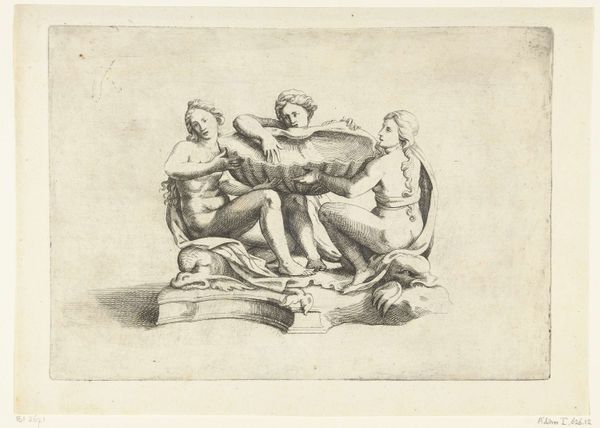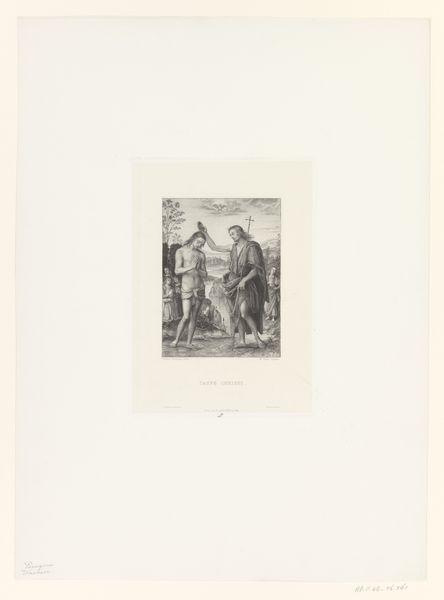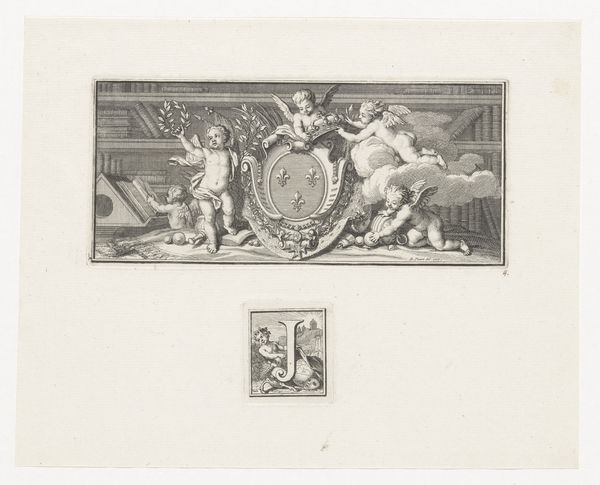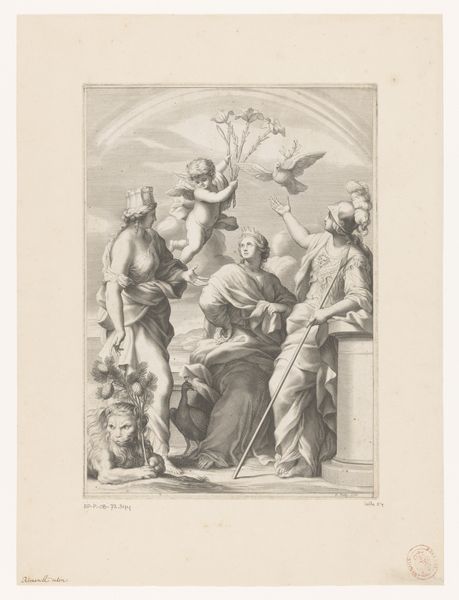
print, engraving
#
pencil drawn
#
aged paper
#
toned paper
#
light pencil work
#
baroque
# print
#
pencil sketch
#
old engraving style
#
figuration
#
personal sketchbook
#
pencil drawing
#
line
#
sketchbook drawing
#
pencil work
#
history-painting
#
academic-art
#
engraving
Dimensions: height 289 mm, width 288 mm
Copyright: Rijks Museum: Open Domain
Editor: This print, "Chiron Teaching Hercules to Ride" by Jean Pesne, made around 1678, is wonderfully detailed. The figures are quite muscular, but what strikes me most is the intricate, almost delicate, linework of the engraving. What draws your attention when you look at it? Curator: For me, it's the production itself that fascinates. Think about the labour involved in creating these fine lines, the skill of the engraver translating an image onto the copperplate. How accessible would such an image have been? The material conditions of its creation speak to the social hierarchies of the time. Editor: Accessible? I suppose prints allowed for wider distribution than paintings, right? Curator: Exactly. Consider the function of prints during this era. It’s not merely art; it’s a commodity, a means of disseminating information and ideals. Were these prints aimed at fellow artists, the elite, or perhaps a burgeoning middle class interested in classical education? This image normalizes hierarchical teaching and ruling. Who benefits from its consumption? Editor: That's interesting. So it’s not just the image, but how it circulated and who had access to it. Did the paper itself or the engraving technique influence its value or intended audience? Curator: Precisely! The quality of paper, the complexity of the engraving—all these material factors played a role in determining its price and its intended market. Were cheaper materials used for mass production or finer papers reserved for wealthier patrons? Analyzing these elements provides insight into the print's social and economic life. Editor: I hadn’t considered that the materials tell a story beyond just the image depicted. So much to consider when looking at art! Curator: Indeed! It is how art enters the sphere of production and consumption, rather than merely aesthetics, that we begin to see the whole picture.
Comments
No comments
Be the first to comment and join the conversation on the ultimate creative platform.
